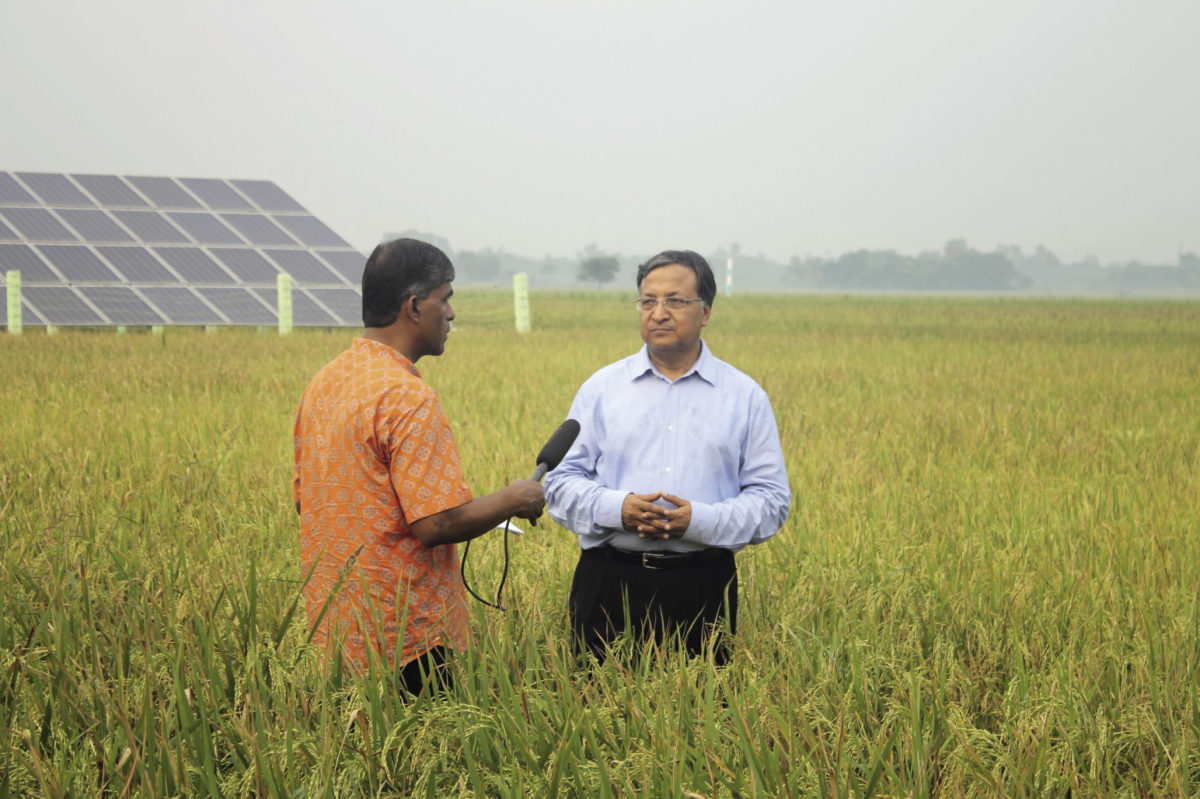From pv magazine 07/2020
How would you describe the situation back when Bangladesh installed its first solar home system?
As a co-founder of the Grameen Bank, a Nobel Peace Prize winner for microcredit operations, I walked 20,000 villages in the country between 1976 and 1996 where the borrowers insisted us that getting electricity can help them improve their quality of life. That time the volume of electricity generation in all of Bangladesh was meager, even the cities were failing to get enough power.
We were looking for options, and while attending various seminars in different countries we heard about renewable energy, especially about solar energy. Then we started working with solar energy, biogas, and wind energy through forming a company, namely Grameen Shakti.
In 1996 we began to import 17 W from countries like Australia, the United States, and Japan, which cost us $7/Wp, and we used car batteries to store energy. But customers were unable to buy solar home systems due to the high cost. So, we designed an affordable monthly installment-based financial model at the price of kerosene oil so that they can buy [what we call] solar home systems (SHS). They were asked to pay half of the price as down payment and be the owner of an SHS at the cost of kerosene.
Despite the low prices, many poor people were unable to buy the systems, thus we thought how the SHS could be turned to a source of income for them. So, with solar panels we launched a cellphone charging system, running television, lighting in village shops among others which let people work late at night and earn more.
How did you increase the scale?
At one stage International Finance Corp. gave us $750,000 as a loan, which helped us to lower down payment to 25% and make systems more affordable. By 2002, we could sell 10,000 units of SHSs thus the USAID agreed to pay $4 million through government channels which helped us to expand the program. Later, the World Bank, Japan International Cooperation Agency, and many other financiers came forward. Now Bangladesh has 5.8 million SHSs which are lighting millions of rural households and village shops where there is no possibility of reaching grid electricity.
What barriers did you face in terms of securing regular payments from people who had borrowed for the SHS?
The price of SHSs was very high then, lowering the cost was a challenge. From Japan, we bought panels at $5/Wp. After that, the Japanese company agreed to lower the price by $1/Wp, only exclusively for Bangladesh since we were providing the systems to the rural poor. At the first stage, people like school teachers, rich farmers, and shop owners could afford to buy the systems and to keep up with the monthly installments.
When the system prices went down, many more could afford it, and the size of monthly installment also went down, so we did not face many problems securing payment.
What is the contribution of SHSs to rural electrification?
The contribution is immeasurable. Thousands of rural villages were in darkness just after the sunset and people were going to bed as early as possible. The SHSs brought life to rural villages and contributed to raise their earnings through engaging income generating sectors.
Some organizations are installing SHSs under the government’s “Taka” program. Are those provided free of cost?
In many areas there is no grid electricity, but at the same time people have no capacity to buy SHSs. As the government plans to ensure electricity for all by 2020, the government is providing the SHSs to them free of cost – to improve their quality of life.
You dreamed of turning Bangladesh into a “solar nation” more than 20 years ago. How close is Bangladesh to achieving this vision?
I was receiving tremendous responses when we introduced the SHSs. But the government did not take renewables seriously until now. In my definition, if over 50% of people of a country use solar power on a daily basis that can be called a ‘solar nation.’ We have to give more effort to it. If we install more solar-run irrigation pumps, streetlights, and rooftop solar in every household, the target will be achieved easily. Presently some 40 million people in Bangladesh use solar power out of the 160 million total population.
What kind of challenges does the solar sector face nowadays?
The main problem is there is no roadmap from the government’s side as to how to achieve the target of generating 10% of the country’s electricity from renewables by 2021. We have to prepare an action plan for how to achieve it, for example, how much to generate from irrigation pumps, how much from the rooftop, how much from SHSs, from floating solar, from wind, and from large-scale plants.
We have to create a budget with incentives, lower the interest rate of bank loans, particular sectors have to be given responsibility that you have to generate at least a certain volume.
What sort of financial challenges does sector face?
So far, we did not see any allocation in the fiscal budget for the renewable energy sector. We get some soft loans from various global financial institutions but that is not adequate to help the industry to flourish. Moreover, there is no effective supervisor at the government level to look after the sector. A separate ministry has to be set up to care for the industry.
Interview by Syful Islam
This content is protected by copyright and may not be reused. If you want to cooperate with us and would like to reuse some of our content, please contact: editors@pv-magazine.com.








We are Start Up in electrical & energy sector. So we want to subscibe of PV magazine to know about latest info, trend, Govt. decorations, market know how, technology upgrades, etc through this magazine.